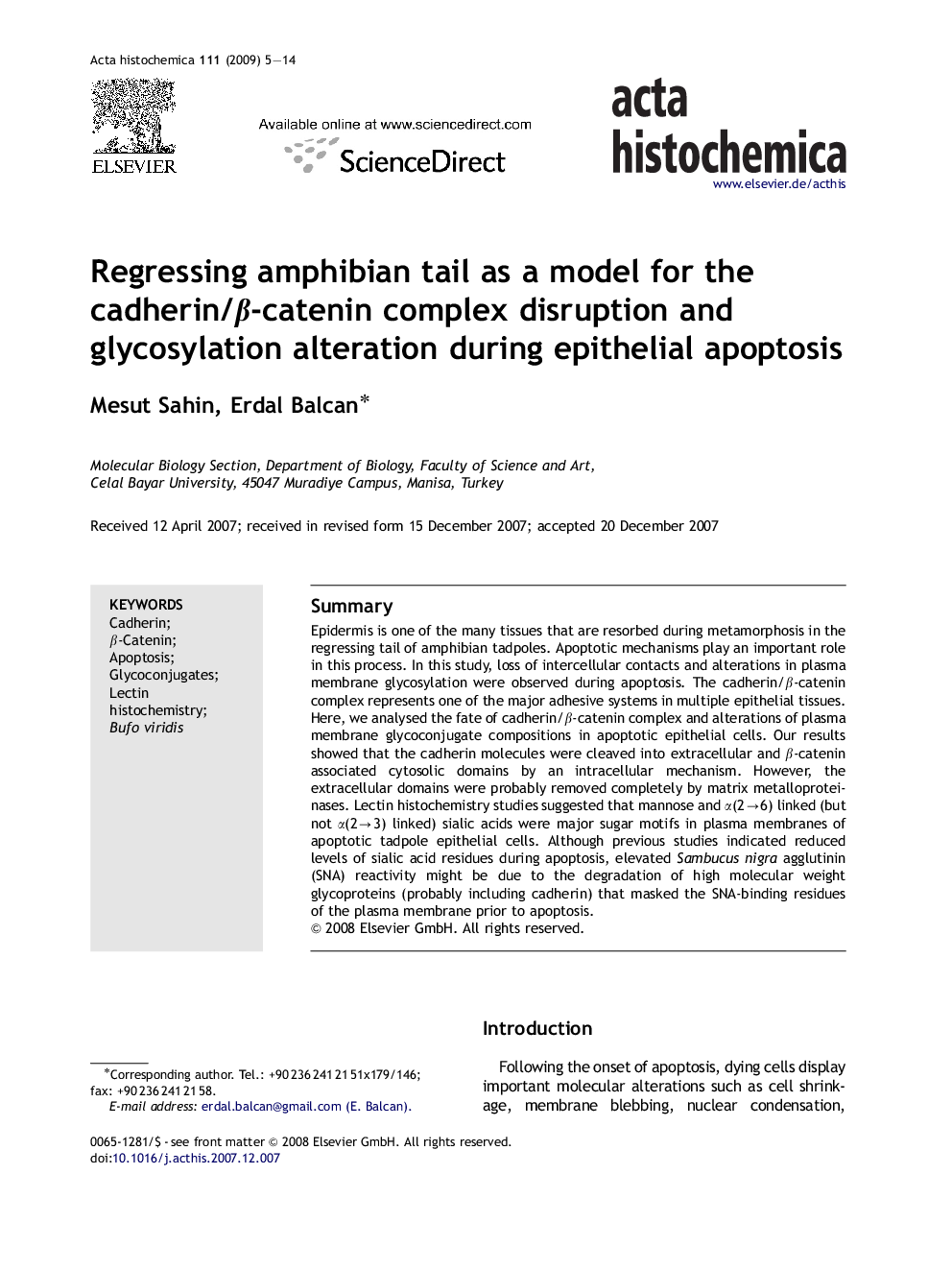| کد مقاله | کد نشریه | سال انتشار | مقاله انگلیسی | نسخه تمام متن |
|---|---|---|---|---|
| 10747238 | 1048924 | 2009 | 10 صفحه PDF | دانلود رایگان |
عنوان انگلیسی مقاله ISI
Regressing amphibian tail as a model for the cadherin/β-catenin complex disruption and glycosylation alteration during epithelial apoptosis
دانلود مقاله + سفارش ترجمه
دانلود مقاله ISI انگلیسی
رایگان برای ایرانیان
کلمات کلیدی
موضوعات مرتبط
علوم زیستی و بیوفناوری
بیوشیمی، ژنتیک و زیست شناسی مولکولی
زیست شیمی
پیش نمایش صفحه اول مقاله

چکیده انگلیسی
Epidermis is one of the many tissues that are resorbed during metamorphosis in the regressing tail of amphibian tadpoles. Apoptotic mechanisms play an important role in this process. In this study, loss of intercellular contacts and alterations in plasma membrane glycosylation were observed during apoptosis. The cadherin/β-catenin complex represents one of the major adhesive systems in multiple epithelial tissues. Here, we analysed the fate of cadherin/β-catenin complex and alterations of plasma membrane glycoconjugate compositions in apoptotic epithelial cells. Our results showed that the cadherin molecules were cleaved into extracellular and β-catenin associated cytosolic domains by an intracellular mechanism. However, the extracellular domains were probably removed completely by matrix metalloproteinases. Lectin histochemistry studies suggested that mannose and α(2â6) linked (but not α(2â3) linked) sialic acids were major sugar motifs in plasma membranes of apoptotic tadpole epithelial cells. Although previous studies indicated reduced levels of sialic acid residues during apoptosis, elevated Sambucus nigra agglutinin (SNA) reactivity might be due to the degradation of high molecular weight glycoproteins (probably including cadherin) that masked the SNA-binding residues of the plasma membrane prior to apoptosis.
ناشر
Database: Elsevier - ScienceDirect (ساینس دایرکت)
Journal: Acta Histochemica - Volume 111, Issue 1, January 2009, Pages 5-14
Journal: Acta Histochemica - Volume 111, Issue 1, January 2009, Pages 5-14
نویسندگان
Mesut Sahin, Erdal Balcan,